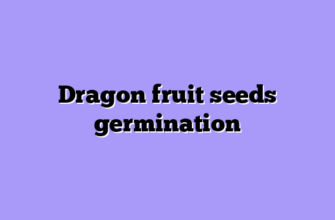Hylocereus stenopterus and Hylocereus guatemalensis are the parents of the Asunta 3 Dragon Fruit. This type of plant also has a gene for the species undatus. Asunta 3 is the third copy in the series of games called Asunta. The first two Asunta sorts, Asunta 1 and #2, had paler flesh.
Description
Asunta 3 (H.Stenopterus x H.Guatemalensis hybrid) has a beautiful, unique flower, and the fruit inside is purple and tastes like grapes. When the plant is young, the fruit may have pink-colored flesh until it grows up. This type of dragon fruit is rare and should be in any serious collection of dragon fruits.
Asunta 3 Purple grows very quickly, just like H. guatemalensis. Growth is a heart-shaped rib with three sides that is bright green and has tiny spins on it.
| Origin: | California |
| Peel color: | Skin that is green to yellow |
| Flesh color: | Pink, magenta-purple |
| Mature height: | 4 - 10 ft. |
| Sun: | Full to part sun |
| Hardiness: | Around 30 degrees |
| Water: | Low-medium (1-4 times weekly during dry months when established) |
| Brix: | ~19-21 |
| Pollination: | Needs to be cross-pollinated |
| Growth rate: | 4 out of 5 |
| Fruit production: | 4 out of 5 |
| Flavor: | 5 out of 5 |
| Home planting: | 4 out of 5 |
| Commercial planting: | 4 out of 5 |
The flower is about the size of a fist, and its inner petals are purple. The edges of the petals are light pink, and the tips are white. The flower bud is just as beautiful as the flower itself. In Louisiana, the flower blooms at night and closes in the morning.
Compared to other types of Hylocereus, this one blooms a lot earlier. This flower may sometimes need to be opened by hand because it sticks together and stays in the last stage of a flower bud. When the flower opens, the stigma sticks out a few inches from the anther.
During bloom, we’ve also noticed that the stigma bunches up, which is another unique thing about the flower. Even though we haven’t tested it ourselves, other growers say that Asunta 3 is not self-fertile. This makes perfect sense, since none of the other clones can reproduce on their own.
Fruits weigh between 3/4 of a pound and 1 pound. The mature skin is a peach color, and the fins and flesh are both pink to purple. Let’s go into more detail. Our first fruit has what we call “pink flesh.” But when the plant is old enough to bear fruit for the second time, the flesh is pure purple.
The average brix of the first fruits that were tested was 19, and they tasted great. We expect this to go up as the fruit ages. We liked how juicy and grape-like the fruit was. One interesting thing about the fruit is that the seeds tend to sprout inside before you cut it open.
So, if you grow plants for flowers, fruit, or just to collect different kinds of Dragon Fruit, you should add this one to your list.

How to grow
Dragon fruit is also called Pitaya or Pitahaya, and it’s not too hard to get a cutting to grow roots. There are many ways to get the cuttings to grow roots, and you can find many videos about it on the internet.
Putting cuttings in a pot with a moist mix of peat moss and perlite is my favorite way to get them to grow roots. Then keep a little bit of water, but not too much. Dragon fruit plants are cacti, but they are tropical cacti, so they need more water than cacti that grow in the desert.
When they are putting down roots, they should be out of the sun and in some shade. If it’s cold outside, you might need to heat their bottoms with a heat mat or something else.
My Experience with Asunta 3 Dragon Fruit
Let me tell you, folks, growing dragon fruit has been an adventure. It’s like nurturing a prehistoric, spiky tennis ball that rewards you with the most stunning jewel tones hidden beneath its scales. But among the varieties I’ve tried, the Asunta 3 holds a special place in my heart, and on my taste buds.
Now, dragon fruit comes in a rainbow of colors, but the Asunta 3 is a real head-turner. Imagine a plump fruit with a vibrant green peel, like a happy lizard sunning itself. Crack it open, and you’re met with a sight that stops you in your tracks – a burst of magenta-purple flesh, so intense it looks like it should be glowing. It’s like a miniature explosion of color in your hands!
But beauty is only half the story. The real magic lies in the flavor. The Asunta 3 boasts a sweetness that rivals the best candy, but with a hint of playful tartness that keeps things interesting. It’s like a party in your mouth – a sweet symphony with a touch of citrusy jazz. The first time I tried it, I swear I heard angels singing. Okay, maybe that’s a bit dramatic, but you get the picture.

But once you get the hang of it, growing Asunta 3 is incredibly rewarding. The sight of those vibrant green fruits hanging from the cactus like festive ornaments is a thrill. And let me tell you, the harvest is worth the wait.
The best part? This stunning fruit is incredibly versatile. Slice it up for a refreshing addition to any fruit salad. It makes the most spectacular smoothie – picture that gorgeous magenta hue turning your morning drink into a tropical paradise. Feeling fancy? Dice it up and throw it into a salsa for a burst of unexpected color and flavor. I even tried grilling it once – the caramelized edges were divine!
Here’s the thing: dragon fruit, especially the Asunta 3, isn’t just a fruit; it’s an experience. It’s a conversation starter at parties, a burst of sunshine on a gloomy day, and a taste bud adventure unlike any other. It’s the kind of fruit that makes you appreciate the beauty and diversity of the natural world, all in one delicious bite.
So, if you’re looking for a challenge and a reward, give the Asunta 3 a try. It might take a little extra effort, but trust me, the payoff is worth it. You’ll be growing not just a fruit, but a conversation piece, a taste sensation, and a little slice of magenta magic.
Conclusion
Edgar Valdivia, a member of the California Rare Fruit Growers group, made this variety by crossing Asunta 2 with Condor again to make it better. The flower is pink and can’t reproduce on its own. It needs to cross-pollinate, and the flowers might need to be opened by hand.
The fruit is bigger than Asunta 2 (~300-450 grams), has a peach-colored skin with lime-colored fins, and pink to magenta flesh that gets darker as it ages. The flesh is firm and has a floral flavor. The brix is said to be 19-21.








